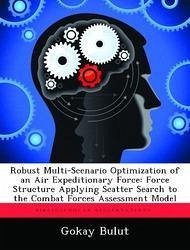
To TPFDD or Not to TPFDD: Ss the TPFDD Outdated for Expeditionary US Military Operations?
Versandkostenfrei!
Versandfertig in über 4 Wochen
54,99 €
inkl. MwSt.

PAYBACK Punkte
27 °P sammeln!
Commanders routinely undervalue logistics, despite the fact that logistics is arguably nine-tenths of the formula for winning. For the United States, this reality has significant consequences since every war beginning with the Spanish-American War in 1898 to the latest Operation IRAQI FREEDOM (OIF) conflict has relied on moving US forces over extended distances. Indeed, despite the importance of logistics in an expeditionary age, the US military has not settled on a standard deployment practice to move its forces. In the early 1990s, the US adopted a Time Phased Force Deployment Data (TPFDD) a...
Commanders routinely undervalue logistics, despite the fact that logistics is arguably nine-tenths of the formula for winning. For the United States, this reality has significant consequences since every war beginning with the Spanish-American War in 1898 to the latest Operation IRAQI FREEDOM (OIF) conflict has relied on moving US forces over extended distances. Indeed, despite the importance of logistics in an expeditionary age, the US military has not settled on a standard deployment practice to move its forces. In the early 1990s, the US adopted a Time Phased Force Deployment Data (TPFDD) as the method to plan out and execute large-scale deployments. First tested in Operation DESERT STORM, the TPFDD remained the principle vehicle through the 1990s to schedule movement of forces. However, a decade later, the TPFDD was abandoned in favor of a Request for Forces (RFF) procedure in the latest OIF contingency in an attempt to build force packages more expeditiously as the campaign unfolded. This monograph provides an in-depth historical comparison of the TPFDD and RFF process to determine which process best prepares the US to move its forces to meet future threats on distant battlefields. Both deployment processes supported massive movements, but both processes extensively drove the employment of combat forces dictating when the operation would commence and what forces were ultimately available. Although the DESERT STORM TPFDD was hindered by external and internal factors, it was a success as the combat forces did establish a significant deterrent foothold immediately in Saudi Arabia with a massive, fully capable defensive force in place twelve weeks later. Likewise, twelve years later, the RFF process provided the forces necessary to accomplish OIF's initial combat objectives in no uncertain terms. Saddam Hussein's regime was toppled and US combat forces transitioned to post combat operations in less than three month's time. Despite the overall success, internal an












